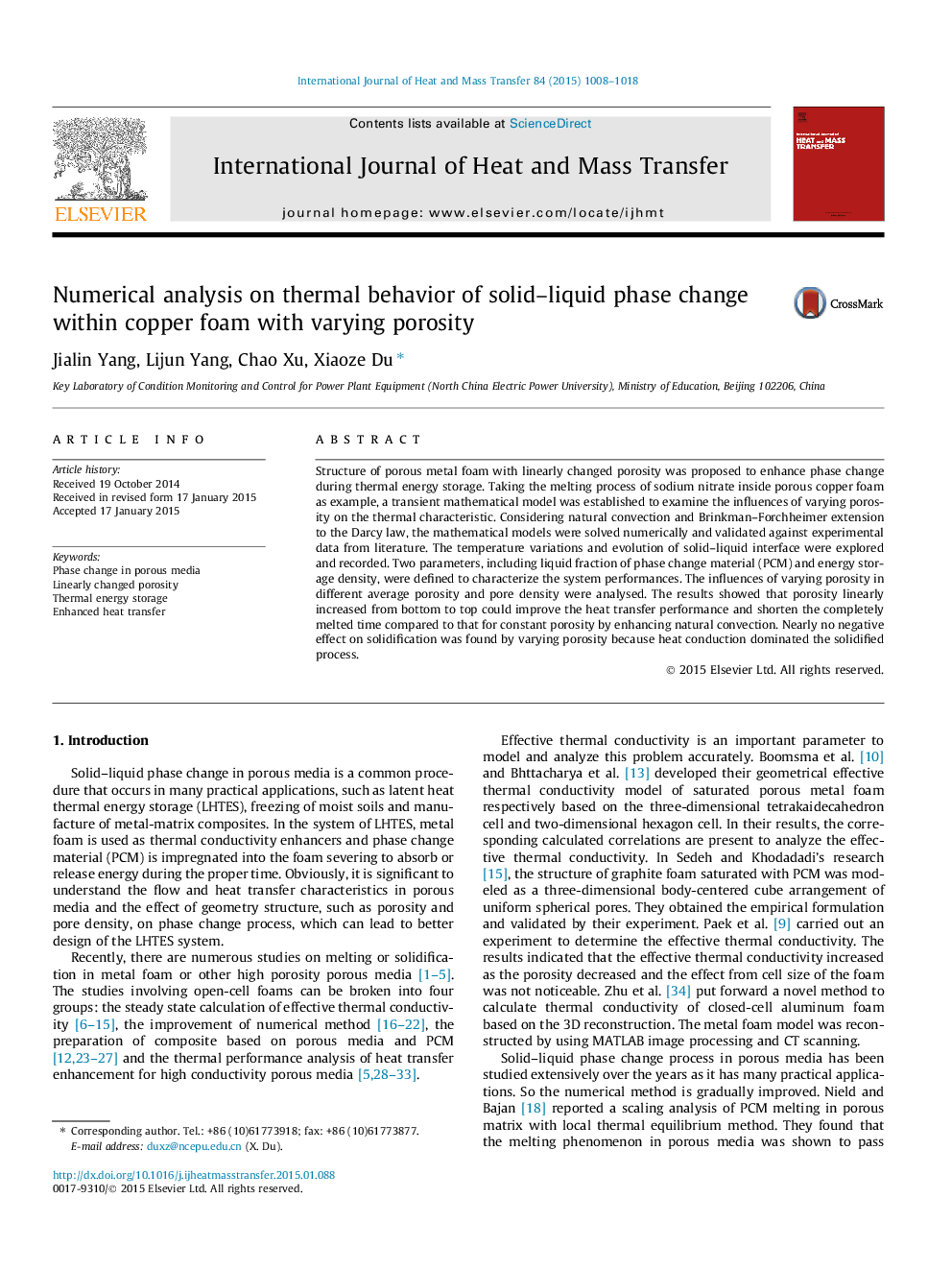| Article ID | Journal | Published Year | Pages | File Type |
|---|---|---|---|---|
| 656990 | International Journal of Heat and Mass Transfer | 2015 | 11 Pages |
Abstract
Structure of porous metal foam with linearly changed porosity was proposed to enhance phase change during thermal energy storage. Taking the melting process of sodium nitrate inside porous copper foam as example, a transient mathematical model was established to examine the influences of varying porosity on the thermal characteristic. Considering natural convection and Brinkman-Forchheimer extension to the Darcy law, the mathematical models were solved numerically and validated against experimental data from literature. The temperature variations and evolution of solid-liquid interface were explored and recorded. Two parameters, including liquid fraction of phase change material (PCM) and energy storage density, were defined to characterize the system performances. The influences of varying porosity in different average porosity and pore density were analysed. The results showed that porosity linearly increased from bottom to top could improve the heat transfer performance and shorten the completely melted time compared to that for constant porosity by enhancing natural convection. Nearly no negative effect on solidification was found by varying porosity because heat conduction dominated the solidified process.
Related Topics
Physical Sciences and Engineering
Chemical Engineering
Fluid Flow and Transfer Processes
Authors
Jialin Yang, Lijun Yang, Chao Xu, Xiaoze Du,
